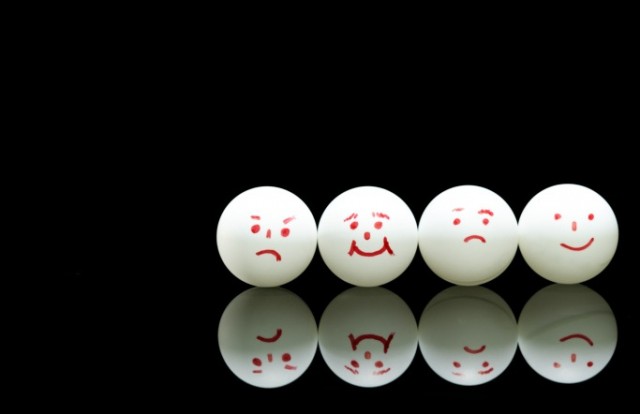Anger. Experiencing it is unmistakable. Creeping into our psyche, slow as molasses, or in the blink of an eye, it can transform our body into its conduit—eyes, heart, hands, soul—every aspect of who we are can become a slave to it. Anger manages to transform our reactions, our perceptions, even the beating of our hearts if we entertain it. It is not a coincidence that society often describes an elevated level of the emotion as “blind rage.”
The question is: Like a savage beast, does anger have to consume our minds, bodies, and spirits? Or, if harnessed and trained, can it become one of our most powerful teaching tools for positive change?
Will you choose to let the angry Hulk come out, or a greater happiness come in?
Did you know that negative emotions, such as anger, occupy the same physical real estate in our brains (the amygdala) as positive emotions? Like the green angry Hulk and his good-hearted counterpart, the continuous effect of negative and positive emotions, constantly at odds with one another, makes for a rather sensitive and unstable environment for positive growth. As a raging beast, the Hulk consumed and destroyed prime real estate within his body and mind, leaving little effective building space for the positive, good-intentioned alter ego, Bruce Banner. When the effects of anger finally wore off, the Hulk, as with many of us who have experienced our own “blind rage,” realized the damage his inner beast had caused, effecting not only the general population, but those he loved, and most importantly—himself. Had Banner been more observant of his hot buttons early in his transformation, he would have saved himself years of frustration, guilt, and sadness, contributing to more, angry Hulk-like experiences.
Unlike a raging beast, we can utilize the experience of anger within the Amygdala as a learning tool for what events, news, and situations trigger our inner Hulk. The conscience recognition of our personal anger factors enable us to have greater awareness of how to talk ourselves down before the beast comes out. This ability for recognition builds an acute sense of empowerment and self-mastery that are key contributors to our overall happiness.
Can you teach an old dog new tricks?
Our brain is like putty. It can be trained and reformed repeatedly. That’s right, just like Pavlov trained his dogs to create an association between a bell and dinner, we can train our brains to respond to positive conditioning. Utilizing the tool of self-recognition for our anger hot-points, coupled with a willingness to alter our instinctual response, creates a positive atmosphere for emotional growth. Because the Amygdala is also involved in housing the memories associated with various emotional responses, the progress we make is one our brain is apt to remember. Positive change is more likely to occur when an individual observes his/her own personality traits and what situations evoke positive or negative emotions. Through positive conditioning, we can better understand our personal well-being needs, enhance daily life, help balance the brain’s impulses for negative reactions, and ultimately help tame the inner Hulk lurking inside.
Interactive Strategies:
Goal: Engage in positive conditioning (repeated patterns of behavior) designed to alter your instinctual impulse to anger and transform your brain waves.
Exercises:
(Remember that you cannot control all the events of the day, but you can control how you respond to them.)
- Keep a journal of events or situations that upset you, your response to them throughout the day, and what you could have, or would like to have done differently. Then study yourself. Often times, how we want to react and how we actually react are at odds. Keeping a journal will help you to actualize your conceptual response.
- Meditate daily for more centered balance in the Amygdala. Numbered breaths act as a recess for anger. When you are concentrating on your breathing, your body must concentrate, therefore your attention is momentarily altered allowing you to regroup.
- Exercising daily. If even for fifteen minutes, exercise allows your body to relieve subconscious stress. Less stress in your day contributes to less anger.
- Establish a positive counterpoint to each negative. Example: Your boss says, “You’re late with the proposal!” You say, “Yes, but as a result, we now have more data available to support moving forward with the project.” Of course, your response is relative to the situation, but there is always a yin to the yang, even if it is only discovered after the event.
- Always remember: how we relate to any issue is the issue.
Lisa Cypers Kamen is acclaimed for her engaging blend of positive and spiritual psychology coaching, workshops, and philanthropic projects. Through her books, radio show, media appearances, and inspiring documentary films, such as “H Factor: Where Is Your Heart?,” Ms. Kamen serves to educate, facilitate happiness, and cultivate greater well-being in private and public audiences around the world. Ms. Kamen recently launched Harvesting Happiness for Heroes, a pending 501(c) (3) non-profit corporation dedicated to bringing integrated psychology coaching tools and mindfulness training to Veterans and their loved ones challenged by combat trauma and other post-deployment reintegration issues. Ms. Kamen is regularly featured for her work, including on The Huffington Post, ABC and CBS television, Yahoo News, and Money Watch. She completed her Master’s Degree in Spiritual Psychology at the University of Santa Monica and resides in Southern California with her two children. You can visit Lisa on her website, Facebook or Twitter.












